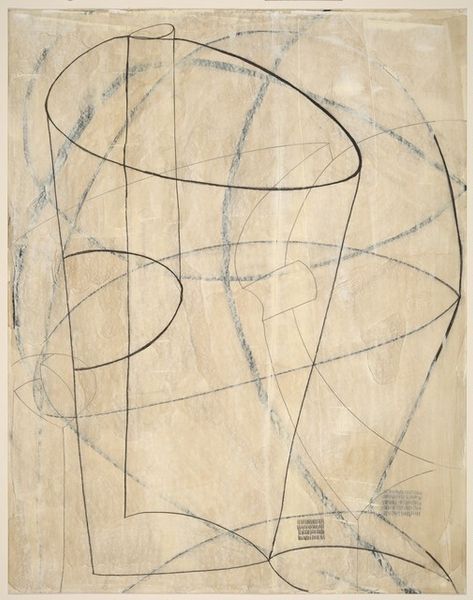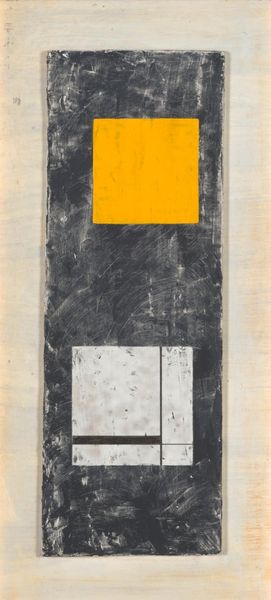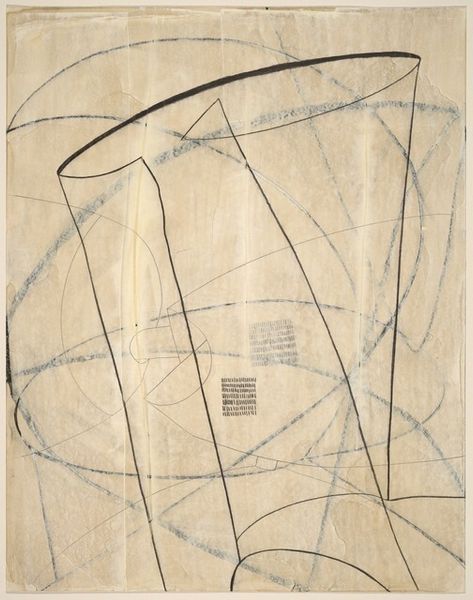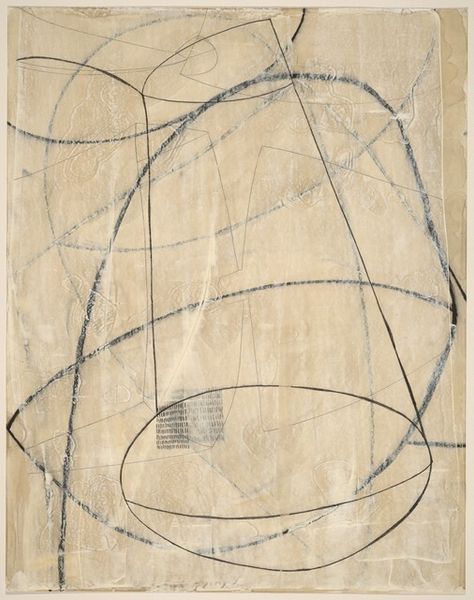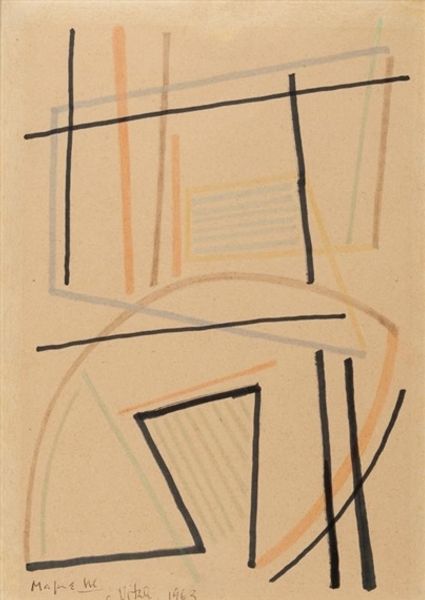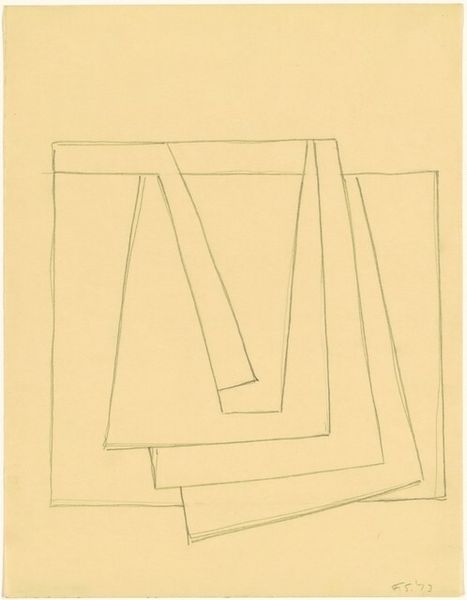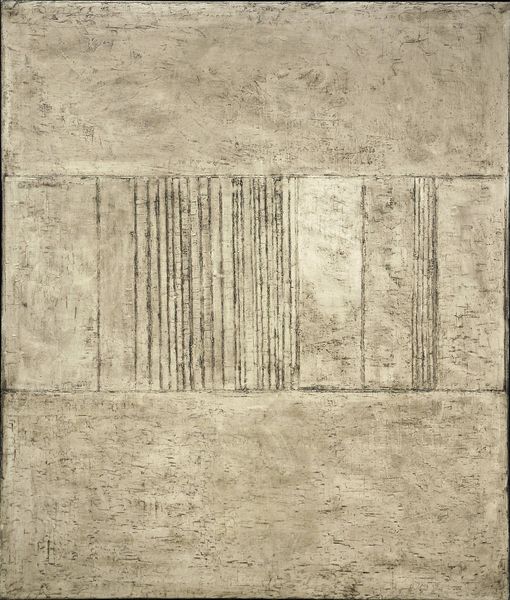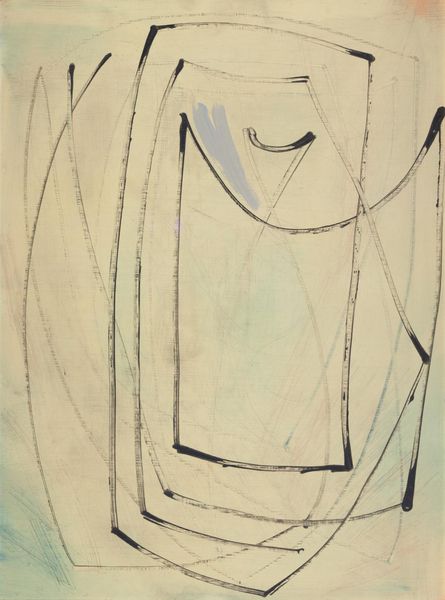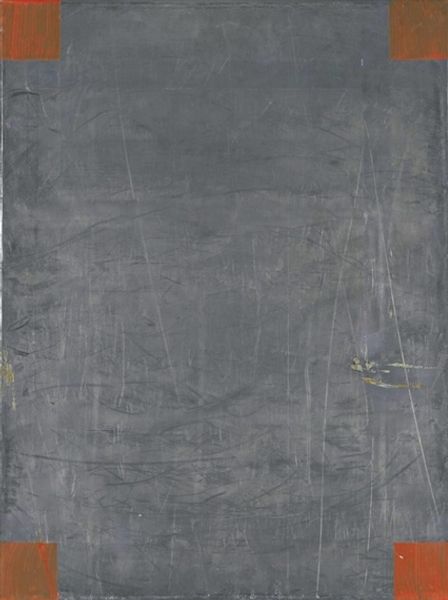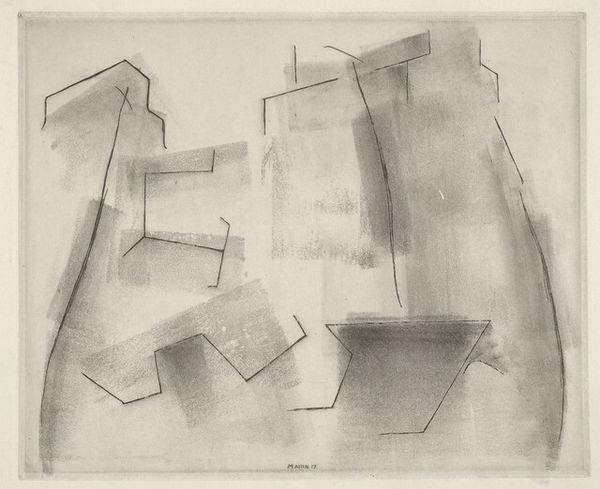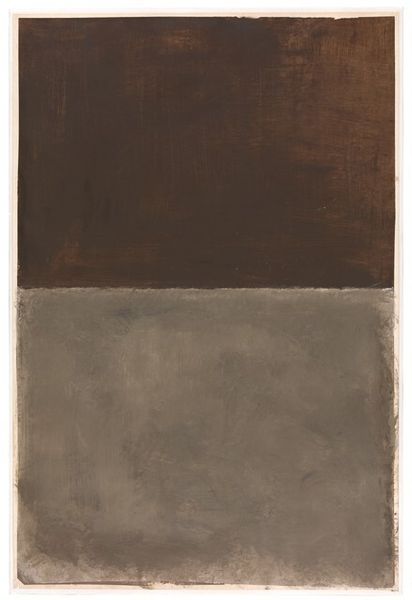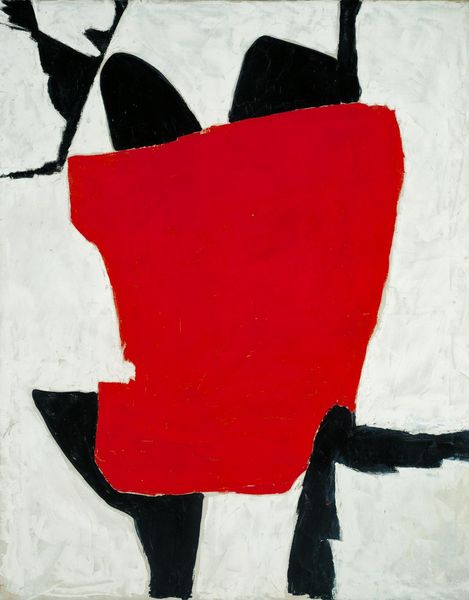
Dimensions: support: 254 x 352 mm
Copyright: © Angela Verren Taunt 2014. All rights reserved, DACS | CC-BY-NC-ND 4.0 DEED, Photo: Tate
Editor: Here we have Ben Nicholson's "July 62 (cool moon)," a painting from 1962 held at the Tate. It’s mostly in muted grays and whites, with geometric shapes lightly sketched across the surface. What do you see in this piece? Curator: I see a quiet rebellion against the prevailing machismo of abstract expressionism. Nicholson's subtle geometry speaks to a different kind of power, one rooted in introspection and a distinctly British sense of understatement. How does its minimalist palette strike you? Editor: It feels restrained, maybe even a little…oppressed? Curator: Perhaps. But consider the postwar context: a society rebuilding, redefining itself. This isn't about grand gestures, but about finding beauty and meaning in simplicity, a conscious rejection of bombast in favor of quiet resilience. Editor: I hadn't thought about it in that context. It makes me consider the social and political landscape of the time. Curator: Exactly. Art is always in dialogue with its time, reflecting and refracting the forces that shape us. Editor: Thanks, that really shifts my perspective. Curator: Mine too.
